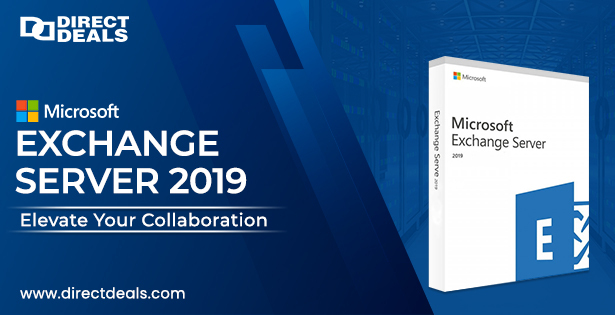Building Knowledge Graphs with .NET: A Comprehensive Guide
In the ever-expanding landscape of data management and analysis, knowledge graphs have emerged as a powerful tool for organizing and representing interconnected information. With the advent of .NET development services, developers now have access to a wide array of libraries and frameworks that streamline the process of building and deploying knowledge graphs. In this comprehensive guide, we’ll delve into the intricacies of building knowledge graphs with .NET, exploring the underlying concepts, tools, and best practices.
Understanding Knowledge Graphs
At its core, a knowledge graph is a structured representation of knowledge, comprising entities, attributes, and relationships. Unlike traditional databases, which store data in tabular format, knowledge graphs organize information in a graph-like structure, enabling rich semantic querying and analysis.
In a knowledge graph, entities are represented as nodes, while relationships between entities are depicted as edges. This interconnected structure allows for nuanced exploration of relationships and insights that might otherwise remain hidden in disparate datasets.
Leveraging .NET Development Services for Knowledge Graphs
The .NET ecosystem offers a wealth of resources for building robust knowledge graphs, ranging from powerful libraries for graph processing to frameworks for semantic data modeling. Let’s explore some key components of .NET development services that facilitate the construction of knowledge graphs:
1. Graph Database Support
One of the foundational elements of building a knowledge graph is the choice of a suitable graph database. Fortunately, the .NET ecosystem boasts support for popular graph databases such as Neo4j and Microsoft Azure Cosmos DB. These databases provide native APIs and drivers for .NET, allowing developers to seamlessly integrate graph data storage and retrieval into their applications.
2. Semantic Data Modeling
In the realm of knowledge graphs, semantic data modeling plays a pivotal role in defining the structure and semantics of the underlying data. .NET offers powerful tools for semantic data modeling, including libraries like RDFLib.NET and dotNetRDF, which facilitate the creation and manipulation of RDF (Resource Description Framework) graphs. These libraries enable developers to express complex relationships and ontologies in a standardized format, laying the foundation for rich semantic querying and inference.
3. Graph Processing Libraries
Once the data is modeled semantically, the next step is to perform various graph processing tasks such as traversal, querying, and analysis. .NET provides a plethora of graph processing libraries, including QuickGraph and GraphX, which offer robust algorithms and data structures for handling graph data efficiently. These libraries empower developers to implement custom graph algorithms and perform complex graph operations with ease.
4. Integration with AI and Machine Learning
Incorporating AI and machine learning capabilities into knowledge graphs can unlock valuable insights and predictive analytics. .NET development services offer seamless integration with ML.NET, Microsoft’s open-source machine learning framework for .NET. By leveraging ML.NET’s capabilities, developers can train machine learning models on graph data, enabling tasks such as link prediction, entity classification, and anomaly detection within the knowledge graph.
Best Practices for Building Knowledge Graphs with .NET
- Start with Clear Requirements: Clearly define the scope and objectives of your knowledge graph project to guide the data modeling and implementation process effectively.
- Design for Scalability: Anticipate future growth and scalability requirements when designing the schema and architecture of your knowledge graph.
- Use Standardized Vocabularies: Utilize established ontologies and vocabularies such as RDF and OWL to ensure interoperability and semantic consistency within your knowledge graph.
- Implement Robust Error Handling: Incorporate error handling mechanisms to gracefully handle exceptions and edge cases during data ingestion, processing, and querying.
- Optimize Performance: Fine-tune query performance by indexing frequently accessed properties and leveraging caching mechanisms to improve data retrieval speed.
- Regular Maintenance and Updates: Continuously monitor and update your knowledge graph to reflect changes in the underlying data sources and evolving business requirements.
Embracing the Potential of Knowledge Graphs
As businesses strive to extract actionable insights from their ever-expanding datasets, knowledge graphs emerge as a key enabler of data-driven decision-making. By organizing information in a graph-like structure, knowledge graphs not only facilitate intuitive exploration of relationships but also enable context-rich analysis that transcends the limitations of traditional databases.
In the context of .NET development services, the journey towards building knowledge graphs begins with a solid understanding of the underlying principles and tools at our disposal. With a robust foundation in place, developers can embark on a journey of discovery, leveraging the full spectrum of .NET capabilities to craft knowledge graphs that empower users to uncover hidden connections and glean valuable insights from their data.
Harnessing the Power of Linked Data
At the heart of every knowledge graph lies the concept of linked data – the notion that disparate pieces of information can be interconnected through standardized relationships. By adhering to established semantic web standards such as RDF and OWL, developers can ensure that their knowledge graphs are not only interoperable but also semantically rich, enabling advanced querying and inference capabilities.
In the realm of .NET development, libraries such as RDFLib.NET and dotNetRDF provide the building blocks for semantic data modeling, empowering developers to define ontologies, describe entities, and establish relationships with ease. By embracing linked data principles, developers can lay the groundwork for a robust knowledge graph that transcends the boundaries of individual datasets, unlocking a wealth of insights hidden within the interconnected web of information.
Navigating the Graph Landscape with Ease
With the foundation of linked data in place, developers can turn their attention to the task of graph processing – the art of traversing, querying, and analyzing the interconnected nodes and edges of the knowledge graph. In the .NET ecosystem, a myriad of graph processing libraries await, offering a diverse array of algorithms and data structures tailored to the unique needs of knowledge graph development.
From the high-performance graph algorithms of QuickGraph to the interactive graph visualization capabilities of GraphX, developers are spoiled for choice when it comes to navigating the graph landscape. Whether it’s finding the shortest path between two entities, detecting communities within the graph, or identifying key influencers, .NET provides the tools and frameworks necessary to tackle the most challenging graph processing tasks with confidence.
Empowering Decision-Making with AI Integration
As knowledge graphs grow in complexity and scale, the role of artificial intelligence and machine learning becomes increasingly pronounced. By integrating AI capabilities into the fabric of the knowledge graph, developers can enhance decision-making processes, automate repetitive tasks, and uncover hidden patterns and trends within the data.
In the .NET ecosystem, ML.NET emerges as a formidable ally in the quest for AI-powered knowledge graphs. With its intuitive API and rich set of machine learning algorithms, ML.NET empowers developers to train, evaluate, and deploy machine learning models directly within their .NET applications. From sentiment analysis to entity recognition, the possibilities are endless when it comes to augmenting the capabilities of the knowledge graph with AI.
Conclusion
Building knowledge graphs with custom .NET development services represents a transformative approach to organizing and leveraging data assets effectively. By harnessing the power of graph databases, semantic data modeling, graph processing libraries, and AI integration, developers can create sophisticated knowledge graphs that facilitate advanced querying, analysis, and inference. As organizations increasingly recognize the value of interconnected data and semantic relationships, the demand for skilled .NET developers adept at building knowledge graphs is poised to rise. Embracing this emerging paradigm opens up new avenues for innovation and discovery in the realm of data-driven decision-making.
Also know why informics digital is best hybrid mobile app development company



